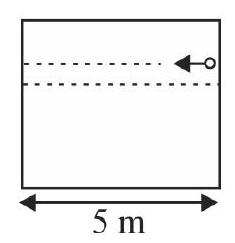360308 An ideal gas enclosed in a cylinder at pressure of \(1\,atm\) and temperature, \(300 K\). The mean time between two successive collisions is \(2 \times {10^{ - 8}} s\). If the pressure is doubled and temperature is increased to \(400 K\), the mean time between two successive collisions will be close to :
360308 An ideal gas enclosed in a cylinder at pressure of \(1\,atm\) and temperature, \(300 K\). The mean time between two successive collisions is \(2 \times {10^{ - 8}} s\). If the pressure is doubled and temperature is increased to \(400 K\), the mean time between two successive collisions will be close to :
360308 An ideal gas enclosed in a cylinder at pressure of \(1\,atm\) and temperature, \(300 K\). The mean time between two successive collisions is \(2 \times {10^{ - 8}} s\). If the pressure is doubled and temperature is increased to \(400 K\), the mean time between two successive collisions will be close to :
360308 An ideal gas enclosed in a cylinder at pressure of \(1\,atm\) and temperature, \(300 K\). The mean time between two successive collisions is \(2 \times {10^{ - 8}} s\). If the pressure is doubled and temperature is increased to \(400 K\), the mean time between two successive collisions will be close to :
360308 An ideal gas enclosed in a cylinder at pressure of \(1\,atm\) and temperature, \(300 K\). The mean time between two successive collisions is \(2 \times {10^{ - 8}} s\). If the pressure is doubled and temperature is increased to \(400 K\), the mean time between two successive collisions will be close to :
